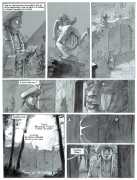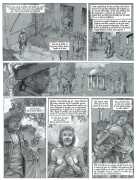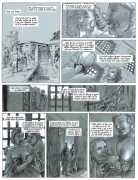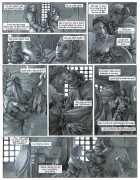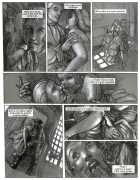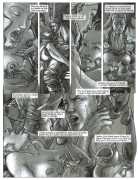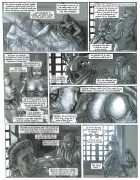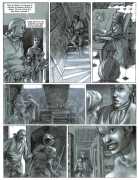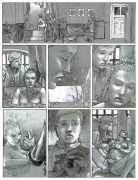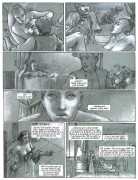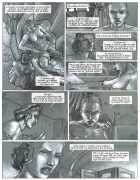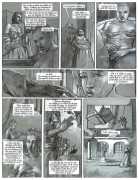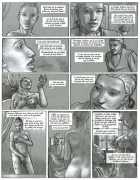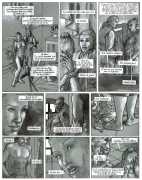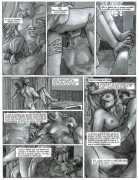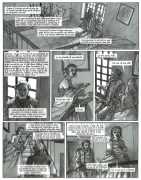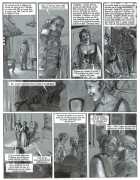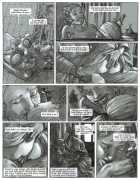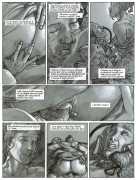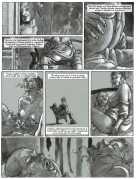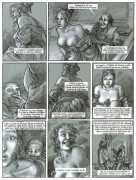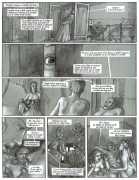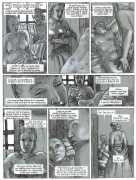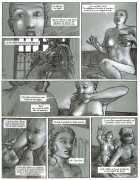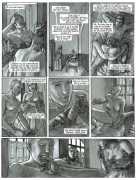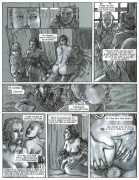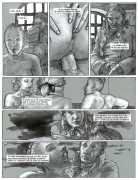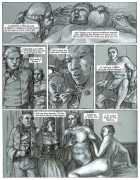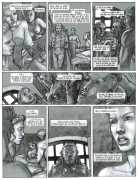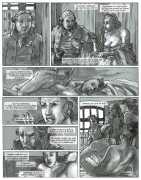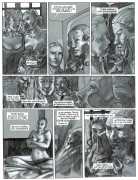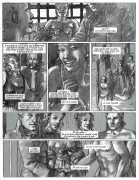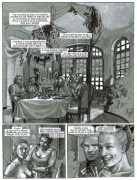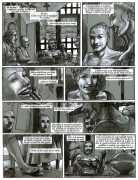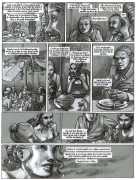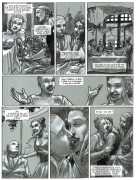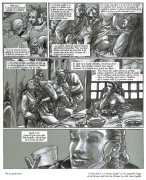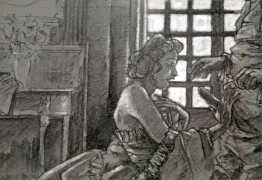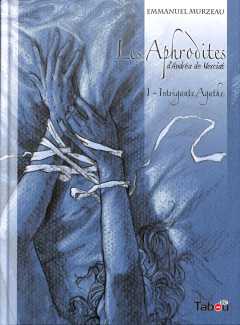 In the introduction to all four volumes of Murzeau’s version of Les Aphrodites the artist writes, ‘The order or Fraternity of Aphrodites, also called The Morosophes (from the Greek words for madness and wisdom), was formed during the Regency of Philippe d’Orléans, a statesman and a man of pleasure. The Order of Aphrodites was a secret society made up of “brothers” and “sisters” engaging in the most unbridled libertinage. From the remains of that old institution, one was formed of which the following pages will give an idea. There we will see the gradual development of the supreme lewdness and capricious habits of The Aphrodites, people with reprehensible morals, but who at least are not dangerous and who, happy with their own Constitution, do not seek to change the world. It is to the lack of interest that modern Aphrodites have in hiding what is happening in their Sanctuary that we owe the faithful scenes which make up this joyful work.’
In the introduction to all four volumes of Murzeau’s version of Les Aphrodites the artist writes, ‘The order or Fraternity of Aphrodites, also called The Morosophes (from the Greek words for madness and wisdom), was formed during the Regency of Philippe d’Orléans, a statesman and a man of pleasure. The Order of Aphrodites was a secret society made up of “brothers” and “sisters” engaging in the most unbridled libertinage. From the remains of that old institution, one was formed of which the following pages will give an idea. There we will see the gradual development of the supreme lewdness and capricious habits of The Aphrodites, people with reprehensible morals, but who at least are not dangerous and who, happy with their own Constitution, do not seek to change the world. It is to the lack of interest that modern Aphrodites have in hiding what is happening in their Sanctuary that we owe the faithful scenes which make up this joyful work.’
The fictional Aphrodites go back a long way, originating in the fertile imagination of André Robert de Nerciat, in his Les Aphrodites, ou fragments thali-priapiques pour servir à l'histoire du plaisir (The Aphrodites, or Thali-priapic Fragments to Document the History of Pleasure), published in 1793. Nerciat (1739–1800) was a soldier, poet, composer, playwright and novelist, and a spy under both the Ancien Régime and the Republic. He travelled to countries throughout Europe during the course of his busy, sometimes turbulent career, and spent most of the last two years of his life in prison after being arrested by French forces in Italy in 1798, probably for his activities as a double agent. He is mostly remembered today for his libertine writings, including Félicia, ou mes frédaines (Félicia, or My Frolics) in 1775, Le diable au corps (Devil in the Flesh) in 1789, and Les Aphrodites.
Emmanuel Murzeau’s graphic retellings of elements of Nerciat’s narrative follow some of the main characters. In the first story, Intregant Agathe (The Intrigues of Agatha) a young chevalier is taken into her chateau by the shapely Madame Agathe Durut. Other characters turn up, including the Comte and the beautiful Célestine, and the volume ends with the first of many orgies.
Murzeau’s monochrome style is perfectly suited to the narrative, explicit yet refined, and his skill with character, detail and perspective is commendable.
Les Aphrodites: Intregant Agathe is published by Tabou.



